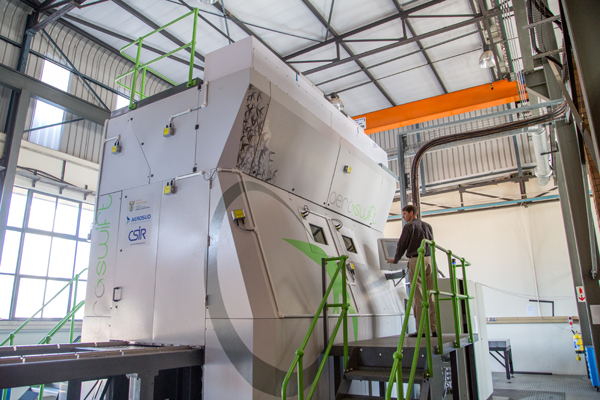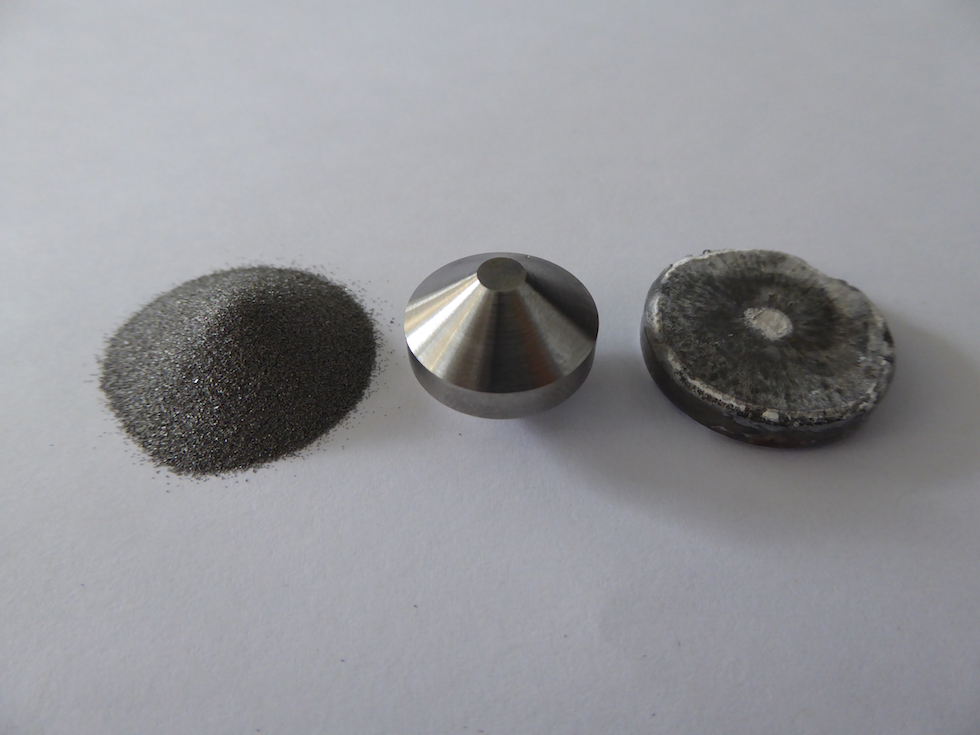Researchers in South Africa are developing the world’s largest titanium powder additive manufacturing machine. First announced in 2011, the government-backed Aeroswift project produced its first demonstrator parts last year and has now piqued the interests of Airbus and Boeing.

Aerospace investigates use of Aeroswift
Reportedly, Boeing and Airbus are now in discussion with the South African group as Aeroswift advance their 3D printing technology. Using their machine, Aeroswift has created a number of demonstrator parts including a throttle lever, a condition lever grip for the throttle assembly and a fuel tank pylon bracket. These parts will be tested in flights this year and, according to the group, the machine is ten times faster than any other laser melting machine currently available.
Terry Wohlers, of consultancy firm Wohlers Associates, is optimistic about the project,
It looks like the people at Aerosud and CSIR are on track and making very good progress toward carving out a slice of what is set to become a 3D printing market valued at tens of billions of dollars,
The Aeroswift additive manufacturing machine has a large production chamber of 2000 mm x 600 mm x 600 mm in size and commercial production with the process is expected to begin in 2019.
3D printing titanium in the aerospace industry
The large titanium parts are intended to be used in the aerospace industry, where the material is advantageous due to its its favorable strength-to-weight ratio. For example, GE has used additive manufacturing to facilitate creation of the LEAP engine.
British researchers are also looking at how to accelerate and increase the use of 3D printed titanium for the aviation industry. The FAST-Forge project looks at the creation of titanium materials for additive manufacturing. It is hoped their forging process will create more abundant titanium from rutile sand.

Aeroswift project
The Aeroswift project brings together South African aviation manufacturers Aerosud and the South African Council for Scientific and Industrial Research (CSIR). South Africa is an appropriate place to base such research with the fourth largest titanium reserves in the world.
Hardus Greyling, Aeroswift’s contract coordinator, said
We have developed new technologies and patents which allows us to upscale the additive process to go significantly faster and significantly larger than other systems.

Airbus and Boeing
Airbus and Boeing are now monitoring Aeroswift, with both companies incorporating 3D printing to their manufacturing processes. Airbus was an early adopter of 3D printing, with over 1000 additive manufactured parts now on their Airbus A350 XWB aircraft. The aerospace manufacturing company is in talks with Aeroswift and the South African government. Reportedly, Airbus is discussing creation of jobs in South Africa. Simon Ward, Airbus’s vice president for international cooperation in Toulouse, said
How best to commercialize the process is a discussion we are currently having with the Aeroswift partners and relevant government agencies
North American company, Boeing is also increasing their use of 3D printing technology for aircraft parts. 3D Printing Industry heard first hand about Boeing’s additive manufacturing implementation in a talk from one of their director’s, Leo Christodoulou. According to Christodoulou, Boeing has more than 50,000 3D printed parts in flight at the moment. With the Aeroswift project, Boeing may soon be able to implement larger parts for their aircraft.
For all the latest news about additive manufacturing with titanium, subscribe to the 3D Printing Industry newsletter and follow us on twitter and Facebook.
Featured image shows an Airbus C295 with Table Bay, Cape Town in the distance. Photo via Airbus.



